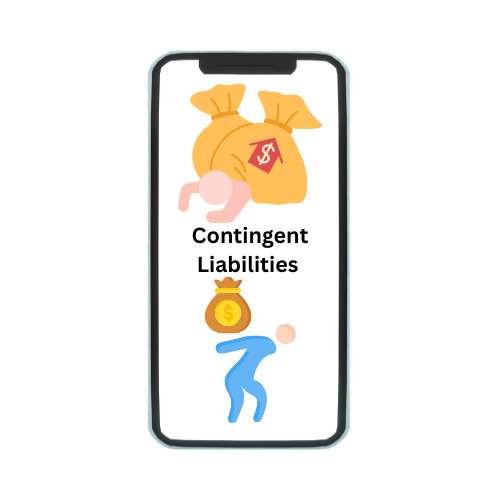What is Bridge Loan?
A bridge loan, also known as interim financing or gap financing, is a short-term loan typically used by individuals or businesses to cover immediate financial needs until longer-term financing or a specific event occurs. Here are the key characteristics and uses of bridge loans:
- Short-Term Duration: Bridge loans are designed to provide temporary financing, often ranging from a few weeks to a few years. They are not intended as permanent financing solutions.
- Immediate Access to Funds: They offer quick access to capital, making them suitable for situations where time is of the essence, such as real estate transactions, business acquisitions, or project funding.
- Purpose: Bridge loans are commonly used to “bridge” financial gaps between the need for immediate cash and the availability of longer-term financing or the occurrence of expected cash inflows (e.g., from the sale of an asset or property).
- Higher Interest Rates: Due to their short-term nature and higher risk profile, bridge loans typically carry higher interest rates compared to traditional loans or mortgages.
- Secured by Collateral: Lenders often require substantial collateral to secure bridge loans, which can include real estate, inventory, accounts receivable, or other valuable assets.
- Flexibility in Repayment: Bridge loans may have flexible repayment terms, including interest-only payments or balloon payments at the end of the loan term. This flexibility helps borrowers manage cash flow during the interim period.
- Usage Scenarios: Common scenarios where bridge loans are used include:
- Real Estate: To bridge the gap between the purchase of a new property and the sale of an existing one.
- Business: To fund working capital needs, acquisitions, or expansions while awaiting long-term financing.
- Project Financing: To cover costs during the development or construction phase of a project until permanent financing is secured.
- Risk Considerations: Borrowers should carefully evaluate the risks associated with bridge loans, such as interest rate fluctuations, the timing of expected cash flows or financing, and the potential impact on cash flow and financial stability.
Types of Bridge Loans
Bridge loans can vary based on the specific needs of borrowers and the nature of the transactions or projects they are intended to support. Here are some common types of bridge loans:
- Real Estate Bridge Loans: These are among the most common types of bridge loans. They are used in real estate transactions to bridge the gap between the purchase of a new property and the sale of an existing one. Real estate bridge loans can also fund renovations or improvements on a property with the intention of refinancing or selling it quickly.
- Corporate Bridge Loans: These bridge loans are used by businesses to cover short-term financing needs, such as funding working capital requirements, acquisitions, mergers, or other corporate transactions. They provide companies with liquidity until they secure long-term financing or complete a specific event, such as an initial public offering (IPO) or a major funding round.
- Construction Bridge Loans: Also known as construction bridge financing, these loans provide funds for the initial stages of a construction project. They cover costs until permanent financing, such as a construction loan or mortgage, can be obtained. Construction bridge loans are used to pay for materials, labor, and other expenses during the development phase of a project.
- Bridge-to-Perm Loans: These bridge loans are structured to transition into permanent financing once certain conditions are met. For example, a bridge-to-perm loan in real estate might convert into a long-term mortgage once the property is stabilized (e.g., leased out to tenants) or once specific financial or operational milestones are achieved.
- Personal Bridge Loans: Individuals may use personal bridge loans to cover financial gaps in personal transactions, such as buying a new home before selling their current one. These loans provide temporary funding until the individual receives proceeds from the sale of their existing property.
- Venture Capital Bridge Loans: Start-ups or growth-stage companies sometimes use bridge loans provided by venture capital firms to bridge financing rounds or to cover operating expenses until they secure additional equity financing or achieve certain milestones.
- Hard Money Bridge Loans: These are short-term loans provided by private lenders or investors, often with less stringent qualification requirements compared to traditional loans. Hard money bridge loans are typically secured by real estate or other valuable assets and are used in situations where quick access to capital is essential.
How Bridge Loan Works??
A bridge loan is a short-term financing option that helps individuals or businesses bridge a financial gap until longer-term financing or a specific event occurs. Here’s a detailed overview of how a bridge loan typically works:
- Identifying the Need: Borrowers identify a temporary need for funds due to timing mismatches in cash flows. This could include scenarios such as purchasing a new property before selling an existing one, funding business operations between financing rounds, or covering expenses during a project’s initial phase.
- Application Process: Borrowers apply for a bridge loan from a lender, which could be a bank, private lender, or specialized bridge loan provider. The application process involves providing documentation such as financial statements, credit history, details of the intended use of funds, and collateral (if required).
- Approval and Terms: Once approved, the lender finalizes the terms of the bridge loan. This includes determining the loan amount, interest rate (which is typically higher than rates for traditional loans due to the short-term nature and higher risk), repayment schedule, and any fees or charges associated with the loan.
- Disbursement of Funds: Upon acceptance of the loan terms, the lender disburses the bridge loan funds to the borrower. Funds are usually provided as a lump sum or in installments, depending on the borrower’s needs and the structure of the loan.
- Use of Funds: Borrowers use the bridge loan funds for the intended purpose, such as purchasing a new property, funding construction or renovations, covering operating expenses, or financing a business acquisition. The funds are meant to provide temporary liquidity until the borrower secures permanent financing or achieves the planned financial objective.
- Repayment Terms: Bridge loans typically have short-term durations, ranging from a few weeks to a few years. Repayment terms vary but commonly include:
- Interest-Only Payments: Borrowers may only need to pay the interest accrued on the loan during its term, with the principal repaid in full at the end of the loan term (balloon payment).
- Balloon Payment: Alternatively, some bridge loans require a single repayment of the principal and accrued interest at the end of the loan term or upon the occurrence of a specific event (e.g., sale of property).
- Exit Strategy: Borrowers must have a clear exit strategy to repay the bridge loan. This strategy typically involves securing long-term financing (e.g., mortgage or permanent business loan), selling an asset, completing a project, or receiving proceeds from a specific transaction (e.g., business sale or funding round).
- Risk Management: Both borrowers and lenders assess and manage risks associated with bridge loans. Risks may include market conditions, interest rate fluctuations, timing risks related to securing long-term financing or completing planned transactions, and the potential impact on cash flow and financial stability.
- Completion and Transition: Once the borrower meets the conditions of the exit strategy, they use the proceeds (such as from property sale or long-term financing) to repay the bridge loan and any accrued interest or fees. Any remaining funds can then be used for other purposes or investments.
Eligibility Criteria For Bridge Loans
The eligibility criteria for bridge loans can vary depending on the lender and the specific type of bridge loan being offered. However, typical eligibility requirements may include the following:
- Creditworthiness: Borrowers are usually required to demonstrate a satisfactory credit history and score. Lenders may consider factors such as credit reports, credit scores, and repayment history to assess the borrower’s ability to repay the loan.
- Income and Financial Stability: Lenders may require proof of stable income or cash flow sufficient to cover the interest payments and potential balloon payment of the bridge loan. This could include income statements, tax returns, bank statements, or financial projections for businesses.
- Purpose of Loan: Borrowers must provide a clear purpose for the bridge loan, such as funding a real estate purchase, covering business operational expenses, or financing a specific project. Lenders assess whether the intended use of funds aligns with their lending criteria and risk appetite.
- Collateral: Bridge loans are often secured by collateral, such as real estate, inventory, equipment, or other valuable assets. Lenders evaluate the value and liquidity of the proposed collateral to mitigate the risk of default.
- Exit Strategy: Borrowers must present a viable exit strategy to repay the bridge loan. This could involve plans to secure long-term financing, sell an asset, complete a transaction, or achieve specific financial milestones. Lenders assess the feasibility and reliability of the borrower’s exit strategy.
- Loan Amount and Terms: Lenders may have specific requirements regarding the minimum and maximum loan amounts, loan-to-value ratios (LTV), and terms of the bridge loan. Borrowers should be prepared to meet these requirements based on their financial circumstances and the intended use of funds.
- Legal and Regulatory Compliance: Depending on the jurisdiction and type of loan, borrowers may need to comply with legal and regulatory requirements, such as providing necessary documentation, disclosures, or assurances related to the loan transaction.
- Experience and Track Record: For business-related bridge loans, lenders may consider the borrower’s industry experience, track record of successful projects or transactions, and overall management capability. This helps assess the borrower’s ability to execute the planned use of funds and manage associated risks effectively.
- Relationship with Lender: Existing relationships with lenders or financial institutions can sometimes influence eligibility criteria, as lenders may prioritize borrowers with whom they have established trust or previous successful transactions.
Advantages of Bridge loan
Bridge loans offer several advantages that make them a valuable financial tool in various scenarios:
- Immediate Access to Funds: Bridge loans provide quick access to capital, allowing borrowers to seize time-sensitive opportunities or address urgent financial needs without delays associated with traditional financing processes.
- Flexibility: These loans offer flexible terms and repayment options, such as interest-only payments or balloon payments at the end of the loan term. This flexibility helps borrowers manage cash flow effectively during the interim period.
- Bridge to Long-Term Financing: Bridge loans bridge the gap between the need for immediate funds and the availability of long-term financing. They enable borrowers to proceed with transactions or projects while awaiting permanent financing or completion of specific events (e.g., property sale or project completion).
- Opportunity Seizure: Borrowers can use bridge loans to capitalize on opportunities that require quick capital deployment, such as real estate purchases, business acquisitions, or investments in growth initiatives. This ability to act swiftly can provide a competitive advantage in dynamic markets.
- Risk Mitigation: Bridge loans help mitigate risks associated with timing mismatches in financial transactions or projects. They ensure continuity and completion by providing temporary liquidity until more permanent financing or transaction outcomes are secured.
- Customizable Terms: Lenders often tailor bridge loan terms to meet specific borrower needs, including loan amount, interest rates, collateral requirements, and repayment schedules. This customization allows borrowers to align financing with their unique financial circumstances and objectives.
- Maintaining Financial Flexibility: Businesses can use bridge loans to maintain operational continuity, fund working capital needs, or manage cash flow fluctuations during periods of growth, restructuring, or market volatility.
- Strategic Use in Real Estate: In real estate transactions, bridge loans facilitate property acquisitions, renovations, or refinancing. They enable investors and developers to unlock equity in existing properties or capitalize on distressed asset opportunities.
- Credit Enhancement: Successfully managing bridge loan repayments can enhance a borrower’s creditworthiness by demonstrating their ability to handle short-term debt responsibly. This can strengthen relationships with lenders and improve access to future financing options.
- Simplicity and Speed: Compared to traditional financing options, bridge loans often involve simpler documentation requirements and faster approval processes, making them suitable for urgent financial needs or time-critical transactions.
Application Process for Bridge Loans
The application process for bridge loans typically involves several steps, which may vary depending on the lender and the specific type of bridge loan being sought. Here’s a general outline of the application process for bridge loans:
- Preparation and Documentation:
- Identify Need: Determine the specific purpose for which the bridge loan is required, such as real estate purchase, business acquisition, project financing, or working capital needs.
- Gather Documentation: Collect necessary documentation, which may include:
- Personal or business financial statements (e.g., balance sheet, income statement).
- Tax returns for individuals or businesses.
- Credit history reports and scores.
- Details of the transaction or project, including estimated costs, timelines, and expected outcomes.
- Collateral information, such as property appraisals, asset valuations, or inventory details.
- Business plans or project proposals outlining the intended use of funds and the exit strategy.
- Selecting a Lender:
- Research and compare bridge loan providers, including banks, private lenders, and specialized lending institutions.
- Consider factors such as interest rates, loan terms, fees, reputation, and experience in providing bridge financing for similar transactions or projects.
- Application Submission:
- Complete the lender’s bridge loan application form, providing accurate and comprehensive information about the borrower, the purpose of the loan, and the proposed collateral (if applicable).
- Submit the application along with the required documentation to the lender for review.
- Review and Approval Process:
- Initial Assessment: The lender conducts an initial review of the application and supporting documentation to assess the borrower’s creditworthiness, financial stability, and the feasibility of the proposed transaction or project.
- Due Diligence: Lenders may perform due diligence, which could include verification of financial information, assessment of collateral value, and evaluation of the borrower’s ability to repay the loan based on existing cash flows or anticipated outcomes.
- Negotiation of Terms: If the initial review is favorable, the lender may enter into negotiations with the borrower regarding the terms of the bridge loan, including loan amount, interest rates, repayment terms, fees, and any specific conditions or covenants.
- Approval and Funding:
- Upon completion of due diligence and agreement on terms, the lender issues a formal approval for the bridge loan.
- Funds are disbursed to the borrower, either as a lump sum or in installments, depending on the agreed-upon terms and the needs of the borrower.
- Execution and Disbursement:
- Both parties execute the bridge loan agreement, which outlines the rights, responsibilities, and obligations of the borrower and lender.
- Disbursement of funds occurs, and borrowers begin using the funds for the intended purpose, such as property acquisition, project development, or operational expenses.
- Management and Repayment:
- Borrowers manage the bridge loan funds prudently, adhering to the agreed-upon repayment schedule and meeting any conditions or requirements specified in the loan agreement.
- Depending on the terms of the bridge loan, borrowers prepare for repayment through an exit strategy, such as securing long-term financing, completing a transaction, or selling an asset.
- Monitoring and Compliance:
- Throughout the loan term, borrowers and lenders may monitor the progress of the transaction or project to ensure compliance with agreed-upon milestones, financial performance expectations, and repayment obligations.
- Borrowers maintain communication with the lender, providing updates on the status of the project or transaction and addressing any issues or challenges that may arise.
Risks associated with Bridge loan
Bridge loans, while useful for bridging financial gaps, carry several risks that borrowers should carefully consider before opting for this type of financing:
- Higher Interest Rates: Bridge loans typically come with higher interest rates compared to traditional loans or mortgages. This is due to the short-term nature of the loan and the perceived higher risk to the lender. High interest costs can significantly increase the overall cost of borrowing.
- Short-Term Duration: Bridge loans are intended for short periods, usually ranging from a few weeks to a few years. If borrowers fail to secure long-term financing or complete the planned transaction within this timeframe, they may face challenges in repaying the bridge loan, leading to additional costs or financial strain.
- Timing and Execution Risks: There is a risk that the anticipated event or transaction that is supposed to provide funds for repaying the bridge loan may not occur as planned. For example, delays in property sales, project completions, or securing long-term financing can jeopardize the borrower’s ability to repay the bridge loan on time.
- Market Conditions: Bridge loans are sensitive to market conditions, including interest rate fluctuations and changes in property or asset values. Adverse market conditions can affect the availability of long-term financing or the ability to sell assets at expected prices, impacting the borrower’s exit strategy for repaying the bridge loan.
- Collateral Requirements: Bridge loans often require substantial collateral to secure the loan, such as real estate, inventory, or other valuable assets. If borrowers default on the loan, lenders may seize and sell the collateral to recover their investment, potentially resulting in loss of assets.
- Financial Strain: Depending on the terms of the bridge loan, borrowers may face financial strain due to high monthly payments, balloon payments, or other repayment obligations. This strain can affect cash flow and liquidity, especially if the anticipated funding or transaction does not materialize as expected.
- Default and Legal Consequences: Failure to repay a bridge loan on time can lead to default. Lenders may impose penalties, fees, or higher interest rates for late payments or default. In severe cases, lenders may pursue legal action to recover their funds, which can damage the borrower’s creditworthiness and financial reputation.
- Regulatory and Compliance Risks: Bridge loans may be subject to regulatory scrutiny and compliance requirements depending on the jurisdiction and type of loan. Non-compliance with regulatory requirements can lead to fines, penalties, or legal consequences for both borrowers and lenders.
- Risk of Renegotiation: In transactions involving bridge loans, there is a risk that the terms of the deal may need to be renegotiated if long-term financing is delayed or not secured as expected. This can lead to additional costs, delays, or even cancellation of the transaction.
- Impact on Relationships: Bridge financing arrangements can strain relationships between borrowers and lenders, especially if there are disputes over terms, repayment schedules, or the performance of collateralized assets.
Conclusion
Overall, bridge loans provide a flexible and short-term financing solution for borrowers facing temporary cash flow challenges or needing quick access to capital for strategic opportunities. They play a critical role in facilitating transactions and projects while managing financial timing risks effectively.






